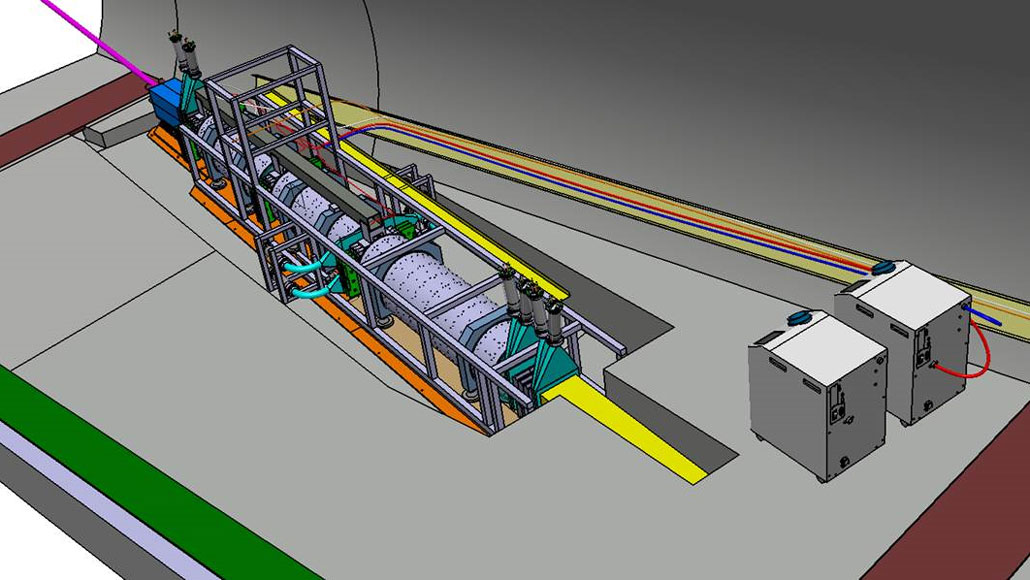The Large Hadron Collider’s claim to fame is its ability to unveil elusive subatomic particles. But there’s one class of particle that it had never directly detected, even though it produces them in abundance. Neutrinos, minute elementary particles, interact so little with matter that they sail through the particle accelerator’s massive detectors unnoticed (SN: 4/8/21).
Now, in a proof-of-concept experiment, the first evidence for neutrino interactions at the LHC has been spotted, researchers with the FASER collaboration report May 13 at arXiv.org. The technique could open up a window to neutrinos at energies for which the particles’ interactions are poorly understood.
It’s the first glimpse of neutrinos produced in a particle collider, a type of particle accelerator that smashes beams of particles together. Physicists have detected neutrinos from particle accelerators by smashing a beam of particles into a stationary target, but not in collisions. Looking for neutrinos in particle collisions allows scientists to probe higher energies, but it also makes the neutrinos more difficult to study.
To catch the neutrinos interacting, the researchers used a detector containing films similar to those used in photographic film. When a charged particle passes through a film, it leaves behind a track marking where it’s been. Neutrinos, which have no electric charge, don’t leave tracks in the detector. But when a neutrino interacts with matter inside the detector, it produces a spurt of charged particles that point to a neutrino as their source.
The researchers put their detector in a region that neutrinos pass through as they shoot forward from particle collisions in the LHC’s ATLAS detector. After estimating how many of the detections might be due to other particles that can mimic neutrinos, the researchers report that they caught about six neutrino interactions.
The LHC, located near Geneva, has been shut down for upgrades since 2018. The experiment, performed shortly before the shutdown, served as a test run for a future experiment, called FASERν, which will start up when the LHC restarts in 2022. FASERν is expected to detect around 10,000 neutrinos during the next period of LHC operations, from 2022 to 2024.
With FASERν, researchers will measure neutrinos’ cross sections, a measure of how likely the particles are to interact with material. That’s important for being able to perform other measurements on neutrinos. For example, scientists can learn about the production of energetic neutrinos in exploding stars and other cosmic sources by detecting them on Earth. But to determine how prevalent such neutrinos are, scientist need to know how likely those neutrinos are to interact with detectors.
Cross sections depend on particles’ energies, and at the LHC, “we can study the energy range we haven’t studied,” says particle physicist Tomoko Ariga of Kyushu University in Fukuoka, Japan, a member of the FASER collaboration.
It’s not a surprise to find neutrinos at the LHC. “This isn’t the Earth-shattering result,” says particle physicist Deborah Harris of York University in Toronto and Fermilab in Batavia, Ill., who was not involved with the research. Instead, it shows that detecting neutrinos at the LHC is possible. “This idea is not totally crazy,” she says.
For all the latest Technology News Click Here
For the latest news and updates, follow us on Google News.

